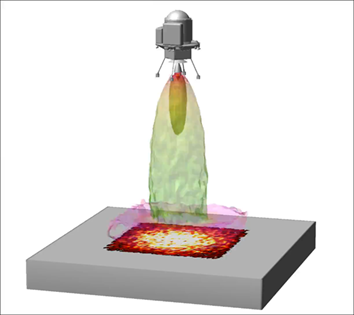DSMC analysis of the rarefied gas flows
JAXA Supercomputer System Annual Report April 2016-March 2017
Report Number: R16E0083
- Responsible Representative: Eiji Shima(Research Unit III Research and Development Directorate)
- Contact Information: Yu Daimon(daimon.yu@jaxa.jp)
- Members: Hiroaki Amakawa, Tomoyuki Deura, Takayuki Ito, Hideyo Negishi, Yoichi Ohnishi, Miki Nishimoto, Yu Daimon, Hiroshi Ishihara, Ashvin Hosangadi, Jeremy Shipman, Masaaki Ino, Jai Singh Sachdev, Osamu Fukasawa, Shinji Ohno, Andrea Zambon, Takenori Nakajima, Yuka Akimura, Takashi Amemiya, Hironori Fujiwara, Hiroumi Tani, Takuya Iimura, Keiichiro Fujimoto, Tetsufumi Ohmaru, Akiko Kotani, Taroh Fukuda, Mayu Matsumoto, Masashi Toyama, Daiki Muto, Susumu Teramoto, Takahiko Toki
- Subject Category: Space(Spacecraft)
Abstract
To understand the rearfield gas flow phenomenon in high altitude and outer space, which is difficult to conduct ground test, and to predict the aerodynamic / thermal environment for reentry and the thermal load of gas plume from a thruster, we aim to develop a practical tool that can deal with actual shape and short analysis period.
Goal
To reduce the development risk of the spacecraft, we will develop a unified tool capable of analyzing any reaefield gas flow such as aerodynamic / thermal environment for reentry and thermal load of gas plume from a thruster.
Objective
Development of a practical tool for reaefield gas flow analysis that responds accurately and timely to requests of JAXA project
References and Links
N/A
Use of the Supercomputer
Rarefield gas flow analysis that simulates complex geometry of an actual spacecraft, automated pre processing, and post processing.
Necessity of the Supercomputer
In order to respond timely to project requirements, it is necessary to simulate complex geometries of actual spacecraft and to analyze a large number of conditions in a short period.
Achievements of the Year
The landing system of Smart Lander for Investigating Moon (SLIM), and the method of attaching the landing gear and the RCS thruster are being studied in the SLIM project. We evaluated the risk of abnormally high temperature due to the interaction between the main engine / RCS thruster plume and SLIM loading (landing leg etc.) using the rarefield gas flow analysis tool developed at Research Unit III. It is necessary to evaluate the risk of abnormally high temperature using analysis before the landing method and shape determination, since it is impossible to predict by ground test prediction. In order to activate thrusters up to several meters above the moon surface, we must also evaluate the plume reflection from the lunar surface. In this study, we used the rarefield gas flow analysis considering SLIM actual geometries and lunar surface with the distance between SLIM and the moon as a parameter. Figure 1 shows the interaction of the main thruster plume and the lunar surface during landing. It predicted the height of the plume reflected from the lunar surface to interact with the landing gear and the heat load at that time, contributing to changing the landing sequence and the RCS thruster attachment angle.
Publications
N/A
Computational Information
- Parallelization Methods: Process Parallelization
- Process Parallelization Methods: MPI
- Thread Parallelization Methods: n/a
- Number of Processes: 400
- Number of Threads per Process: 1
- Number of Nodes Used: 20
- Elapsed Time per Case (Hours): 15
- Number of Cases: 100
Resources Used
Total Amount of Virtual Cost(Yen): 9,100,450
Breakdown List by Resources
| System Name | Amount of Core Time(core x hours) | Virtual Cost(Yen) |
|---|---|---|
| SORA-MA | 2,844,563.02 | 4,577,938 |
| SORA-PP | 223,534.33 | 1,908,536 |
| SORA-LM | 3.82 | 86 |
| SORA-TPP | 156,435.73 | 2,306,644 |
| File System Name | Storage assigned(GiB) | Virtual Cost(Yen) |
|---|---|---|
| /home | 382.46 | 3,607 |
| /data | 14,207.86 | 134,023 |
| /ltmp | 17,876.14 | 168,626 |
| Archiving System Name | Storage used(TiB) | Virtual Cost(Yen) |
|---|---|---|
| J-SPACE | 0.32 | 988 |
Note: Virtual Cost=amount of cost, using the unit price list of JAXA Facility Utilization program(2016)
JAXA Supercomputer System Annual Report April 2016-March 2017



